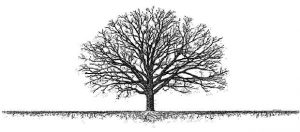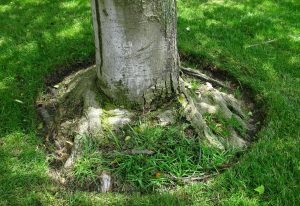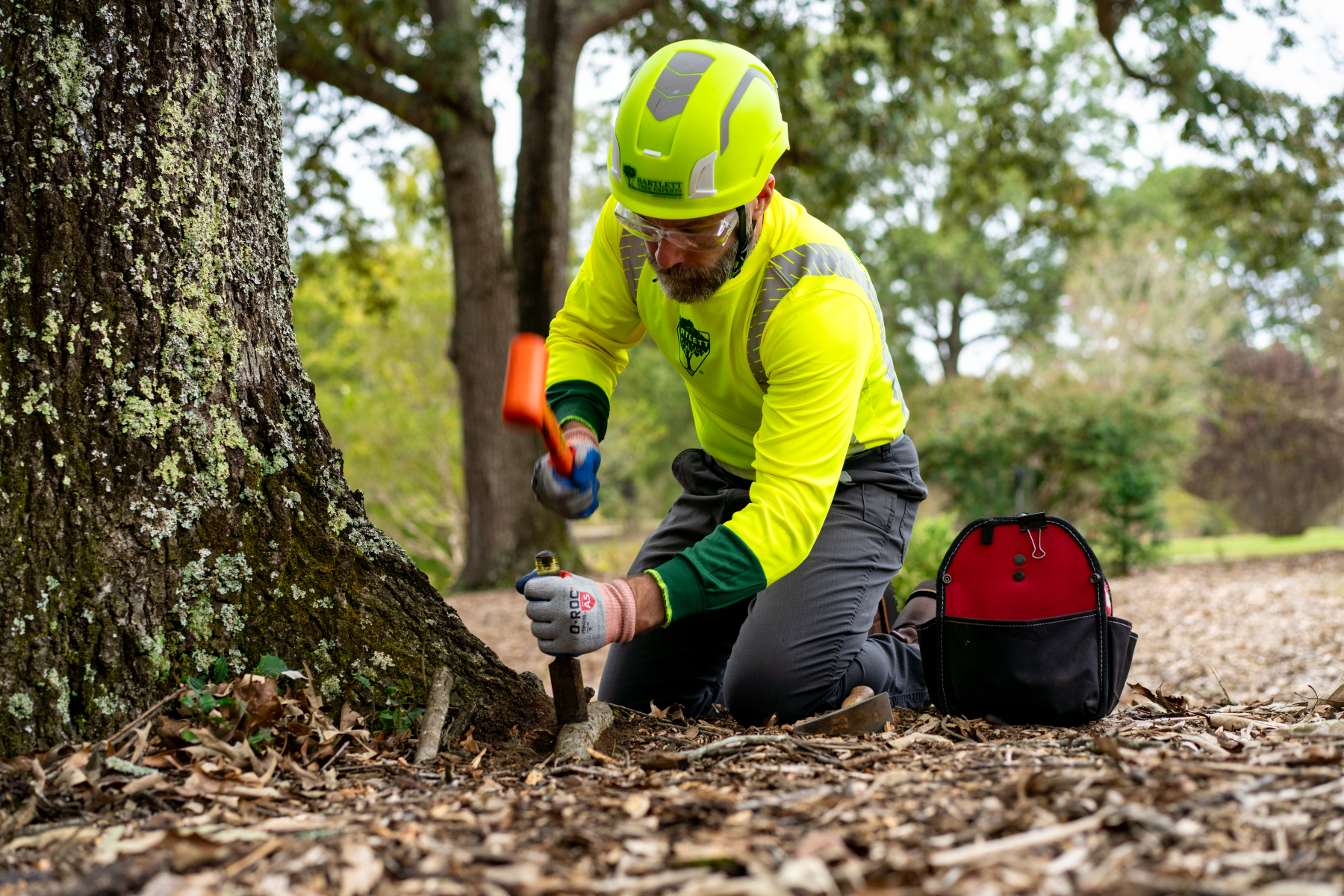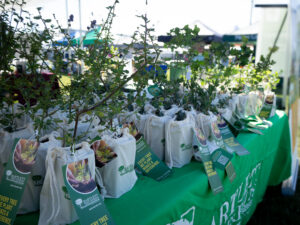A tree gets the water and nutrients it needs from the roots. If that tree has a buried root collar, a portion of the root system is severed, or the roots are otherwise compromised, the tree will suffer proportionately. Buried root collars are a common and serious issue.
 What you can’t see can hurt your trees
What you can’t see can hurt your trees
As roots serve as an anchor to keep the tree upright, when there is a problem with the roots, there is also a problem with the structural stability of the tree. With roots having such vitally important duties, their management is an essential part of tree care. An “out of sight, out of mind” mentality can result in catastrophic consequences.
With this in mind, your trees should have a visible flare where the roots curve out of the ground. Unfortunately, the root collar area is often ‘buried’ under soil or mulch. This happens when the tree is planted too deeply or when excessive mulch is piled against the trunk.
What’s happening underground

Roots grow where the resources they need are located. That means most of a tree’s fine feeder roots are in the top twelve inches or so of soil. Large structural roots may grow several feet deep, depending on species and soil conditions. These large roots grow closer to the trunk of the tree with fine feeder roots extending one to two times the height of the tree.
Porous spaces in the soil allow for better root growth and subsequent absorption of water and nutrients. When the soil is compacted, these porous spaces are reduced, making it difficult for roots to extend and do their crucial work. This is a common issue on urban and suburban properties where trees coexist with people, machinery, pavement and structures. Soil compaction and inadequate aeration are major barriers to tree growth.
The root collar cover-up
It’s often said that the cover-up of a mistake causes more trouble than the mistake itself. And so it is with trees. When soil or excess mulch is piled against the lower trunk, problems with the root system are often ‘covered up.’ If you have trees that seem to grow straight from the ground (like telephone poles), those trees are likely in trouble from buried root collars.

The root collar is the transition area between a tree’s trunk and its roots. While a tree’s roots are able to tolerate high levels of soil moisture, the above-ground root collar is not. When buried, the root collar remains damp and moist, increasing the likelihood of insects and disease and inhibiting the movement of oxygen and carbon dioxide. One specific example is infection by root-attacking fungi such as Phyophthora and Armillaria.
Excess soil or mulch can also hide girdling roots. These lateral roots sit at or just below the soil line, encircling and pressing into the main trunk. Root collar excavation can remove excess soil and mulch to uncover issues. When discovered, girdling roots should be removed, but this must be done with care to minimize injury to the trunk and impact to overall tree health.

What’s happening above ground?
Even though you can’t see what’s going on with the roots of your trees, they’ll let you know a problem exists.
Symptoms of a root issue include:
- Light green or yellowing foliage
- Early leaf coloration
- Upper branch dieback
- Dark areas on trunk or buttress roots
- Oozing liquid on trunk or buttress roots
- Presence of mushrooms or fungal growth near the trunk
- Poor ground cover growth under the canopy
- Abnormal swelling of the base of the trunk
Here’s the kicker, though. Many of these symptoms may not be apparent for years after root damage occurs. That means the tree is living in a weakened state. Not only will it be more susceptible to pests and disease, it can also be more prone to failure under any conditions.
Getting to the roots
Remember, “out of sight, out of mind” is a dangerous mentality. The best thing you can do to protect your trees is to keep roots in mind and prevent damage before it happens.
Avoid root-cutting activities, such as grade changes or installation of underground utilities, within the dripline of the tree. Also avoid piling of soil against the buttress roots and trunk of the tree. Be mindful of using deicing salt near trees and do not allow traffic in the shade of the tree such as the parking of cars.
If soil is compacted, consider options to cultivate the soil. The method we use is a supersonic air tool that tills the soil while minimizing damage to the roots. These loosened soils are then amended with organic matter and nutrients as needed to optimize the soil for root function. This is called air spading and is part of our Root Invigoration process.



